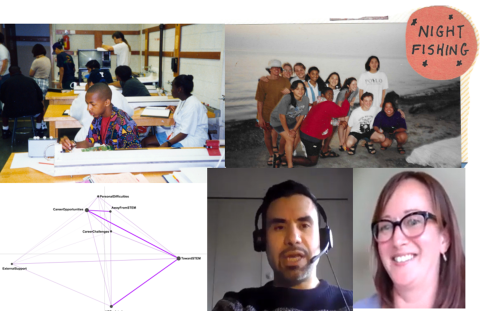Body
Image

Informing the Future with Reflections on Prior ITEST-like Experiences by Current STEM Professionals
ITEST supports projects to build capacity and interest in STEM. By furnishing innovative experiences for teachers and students now, ITEST hopes to improve lives and the nation’s STEM enterprise in the future. ITEST also supports one retrospective study to envision the future by informing from the past. It asks alums of an “ITEST-similar” program – NSF’s 1990s era Young Scholars Program (YSP) – to reflect on how that NSF support shaped their future. How do their reflections inform ITEST PIs now? 1) The mysteries and beauty of STEM fields animate and enthuse adolescents when they animate and enthuse the project leaders. Make visible your love for your field– and your wonderment and surprise at it. 2) Most vivid memories a generation later? YSP alums cite social activities - game nights, trips to a baseball game, or the awe of being on a college campus. One alum, a prominent attorney, repeatedly used the term “holistic” to describe her experience. Be holistic in your projects! 3) YSP alums cite confidence-building as the most formative aspect of their YSP experience, and critical to building their sense of identity. 4) And the paths always change. Some of the students most sure about entering STEM fields took completely unexpected detours. But YSP helped build a foundation for resilience and for navigating early adulthood. May your ITEST projects do likewise!
Pillar 1: Innovative Use of Technologies in Learning and Teaching
As a retrospective effort, this project employs a recently emerging tool called epistemic network analysis (ENA) to help build richer understandings of the reflections that YSP alums shared. This is an advanced methodological tool that current ITEST projects are encouraged to explore. Experiences of the alums heavily involved innovative technologies of the 1990s!
Pillar 2: Partnerships for Career and Workforce Preparation.
As a retrospective effort, this project explores how the many partnerships at the time – and there were many across major technology firms, scientific laboratories, and universities – helped shape an awareness by participants of opportunities for STEM career pathways. At the time, field trips proved the most common form of partnership. They were eye-opening and contributed to the holistic approach of the program nationally.
Pillar 3: Strategies for Equity in STEM Education
One aspect of this retrospective study involves documenting the many ways that faculty nationwide sought to insure and build equity. One principal strategy involved careful attention in recruiting in ways that actively sought to broaden participation in coming alongside STEM professionals, and actively promoted building a more inclusive STEM workforce. And, the holistic and asset-based approach of YSP PIs treated STEM fields as natural and accessible to middle and secondary students.

Discipline(s)
Computer and informational technology science
Engineering
Interdisciplinary
Life sciences
Mathematical sciences
Physics and astronomy
Target Gradespan(s)
Middle school (6-8)
High school (9-12)
Target Participant(s)
Youth / students
Educators
American Indian/Alaska Native participants
Black/African American participants
Hispanic/Latino participants
Project Setting(s)
Informal Education
Category
Exploring Theory and Design Principles (ETD)
Scaling, Expanding, and Iterating Innovations (SEI)
Synthesis
EAGER
Research Study